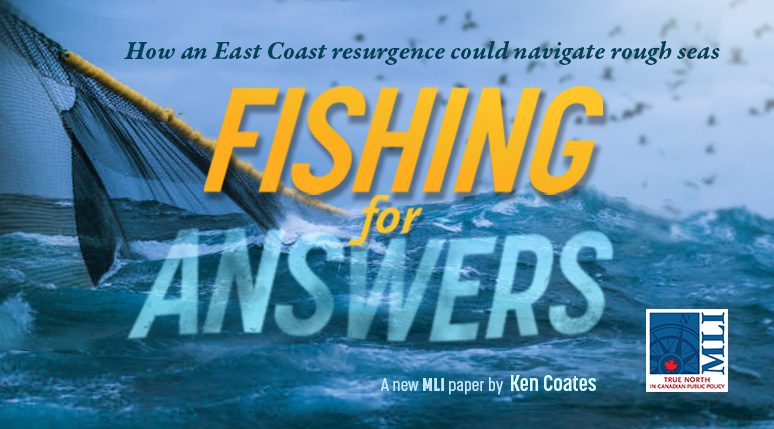OTTAWA, ON (January 17, 2023): In recent years, Canada’s East Coast fishing industry has come of age, both in terms of its economic potential and public policy importance. While the prevailing image of Canada’s East Coast emphasizes quaint fishing communities and long-term decline, the new regional economy is in fact vibrant and commercially creative, but also vulnerable.
In this report, titled Fishing for answers: How an East Coast resurgence could navigate rough waters, Distinguished Fellow Ken Coates examines Canada’s East Coast fishing industry, assessing both the industry-specific challenges and opportunities, and the impact of the sector on the region’s society and economy.
“The economic resurgence along Canada’s East Coast is not comparable in scale and national impact to oil sands developments in Alberta or housing projects in suburban Toronto, but there are abundant signs of economic improvement in the area nonetheless,” writes Coates.
“Yet the situation on the East Coast is far from ideal… The long-term effects of climate change, the concentration of fleet and processing ownership, unresolved issues around First Nations fishing rights, conservation management questions, and decades-long ‘creative’ tensions between the industry and the Department of Fisheries and Oceans (DFO) all need to be addressed.”
With the Marshall decision, First Nations were able to acquire licences and quota, along with investments in training and equipment. Nonetheless, not all First Nations see a future in the fishing industry: some East Coast First Nations do not live on the coast and are not obvious beneficiaries of the Marshall decision. They should, however, still have access to secure financial, employment, and commercial benefits.
Despite the record of successes, Coates writes that Canada’s East Coast fishery is heading toward an inflection point. Among the long list of issues, several stand out:
- Indigenous treaty rights are ill-defined and are currently managed by “presumption of rights” rather than a court-defined specific right. Recourse to the courts on matters of Indigenous fishing could easily result in an expansion – or a contraction – in Indigenous rights.
- Unless the DFO expands its consultations and engagement with the non-Indigenous fishing community, a truly collaborative solution would not be possible.
- The dual challenge of rapidly improving conditions in First Nations communities and maintaining the sustainability of non-Indigenous communities.
- Lack of a common cause between Canada’s East Coast fishery sector and resource producers across the country, when collectively, the resource producers and their industry associations, unions, and local political representatives could be a formidable political force.
“Capitalizing on the potential of the industry, however, requires more and careful attention to the needs and interests of the fish harvesters and fishing communities on the nation’s East Coast,” concludes Coates.
“The country requires an integrated, collaborative, and transparent approach to fisheries management that is consistent with the the treaty rights and aspirations of First Nations and the economic potential of an industry that is already highly accomplished at resource management, commercial development, and technological innovation.”
To learn more, read the full paper here:
***
Ken Coates is a Distinguished Fellow at the Macdonald-Laurier Institute, and the Canada Research Chair in Regional Innovation at the University of Saskatchewan.
For further information, media are invited to contact:
Skander Belouizdad
Communications Officer
613-482-8327 x111
skander.belouizdad@







